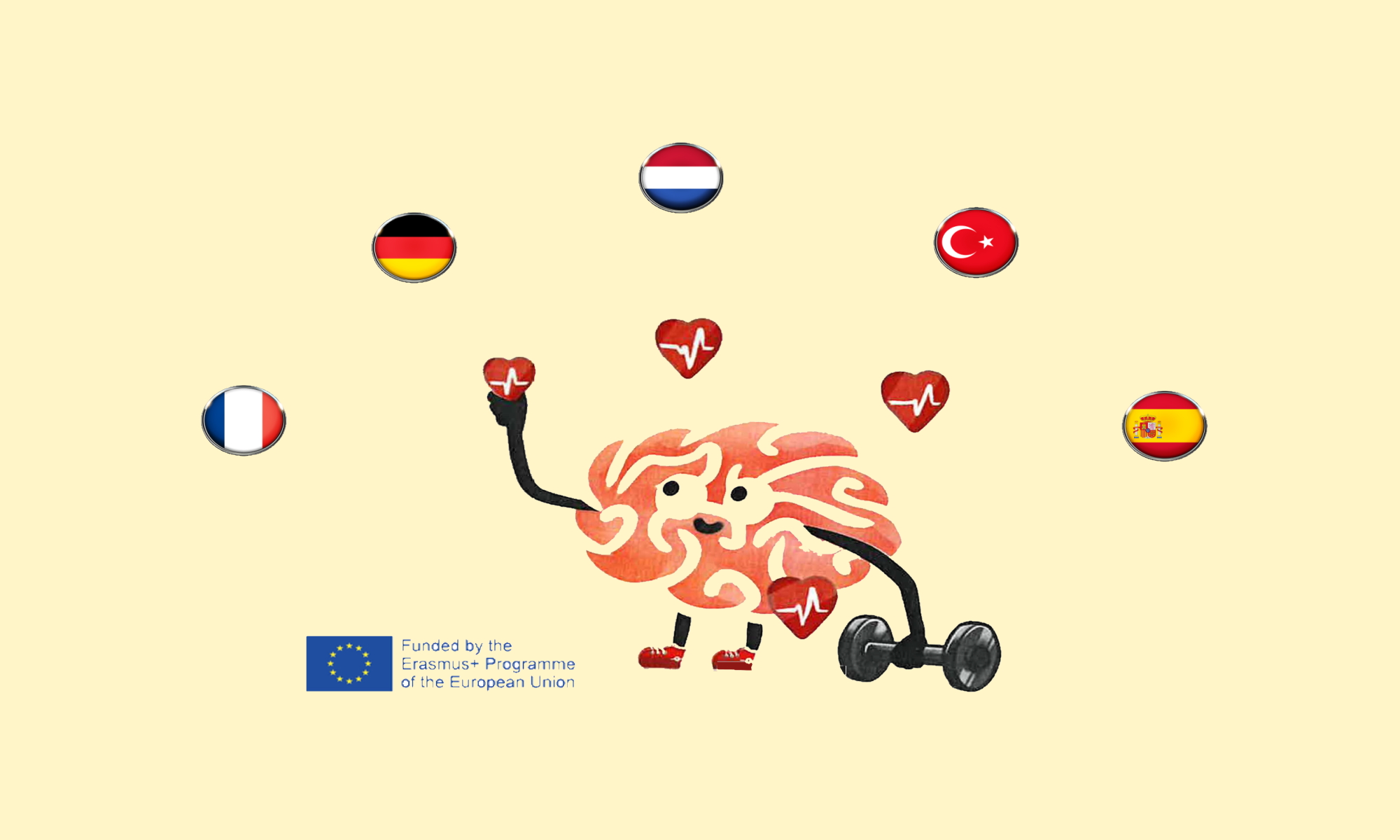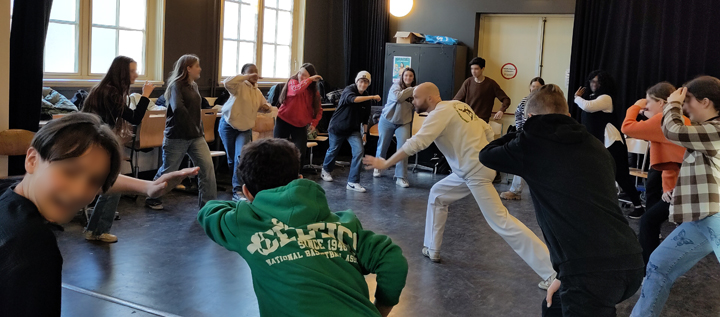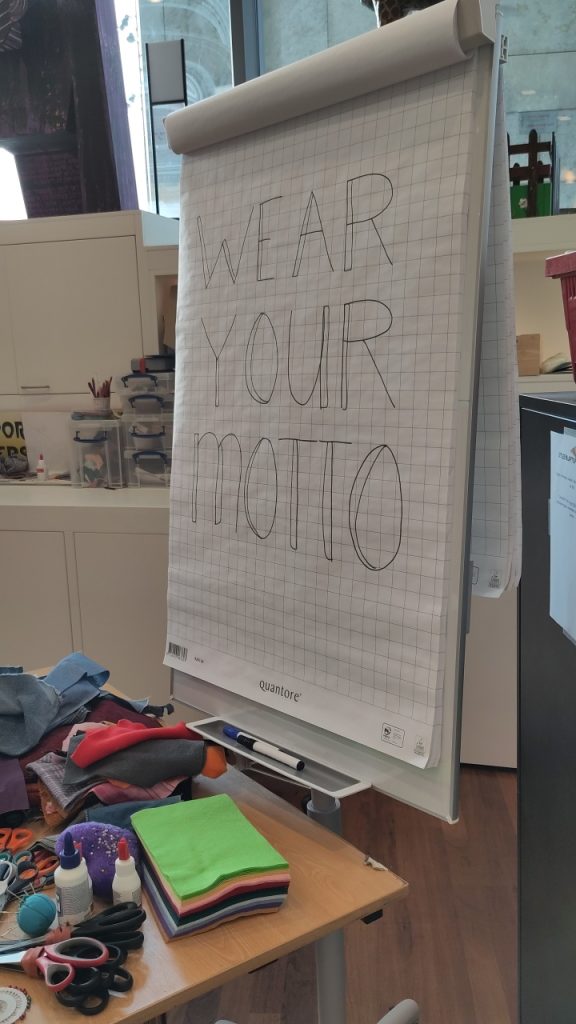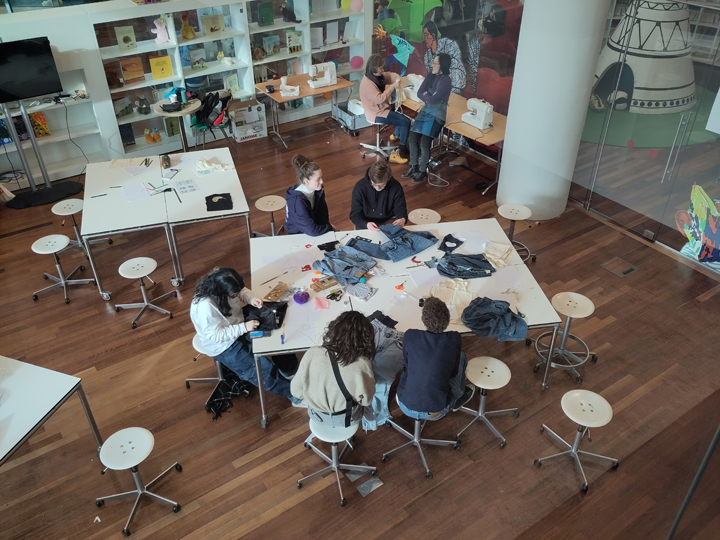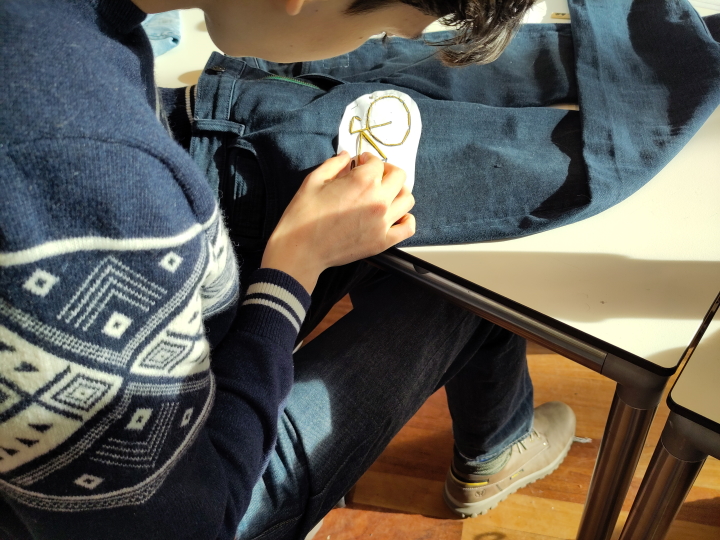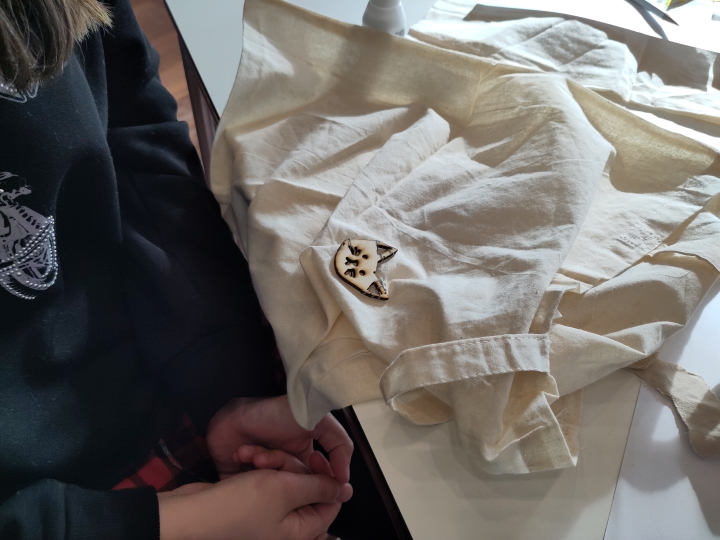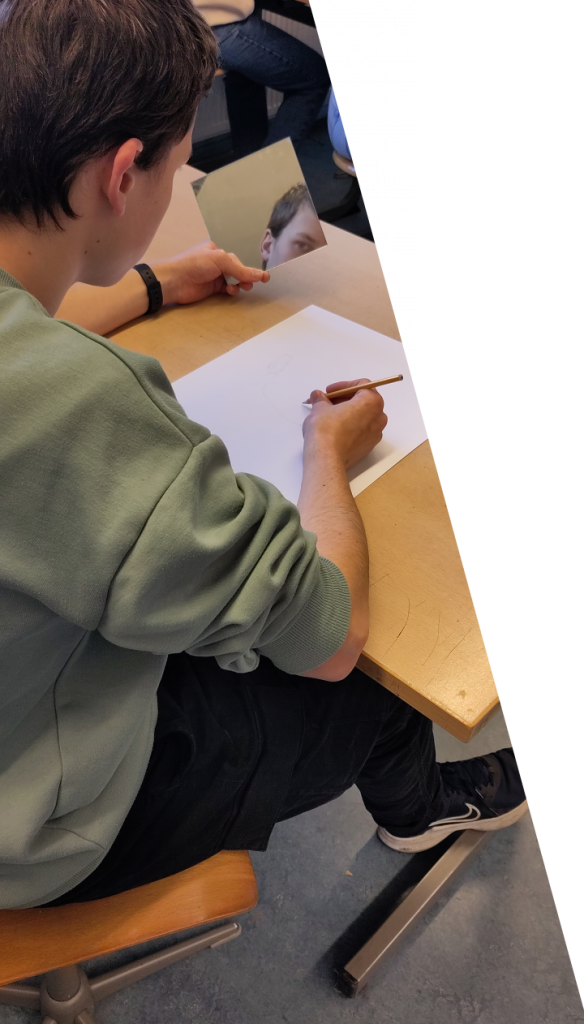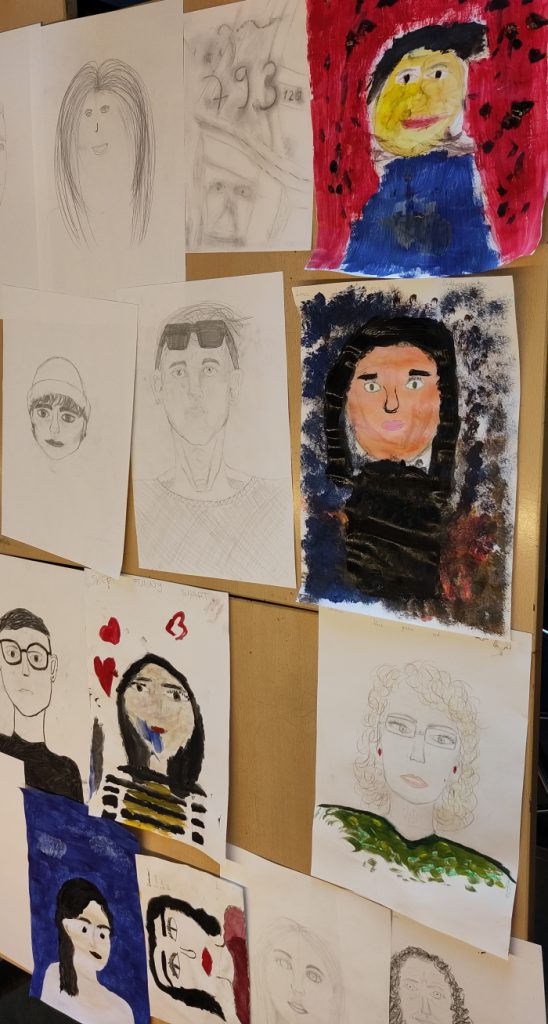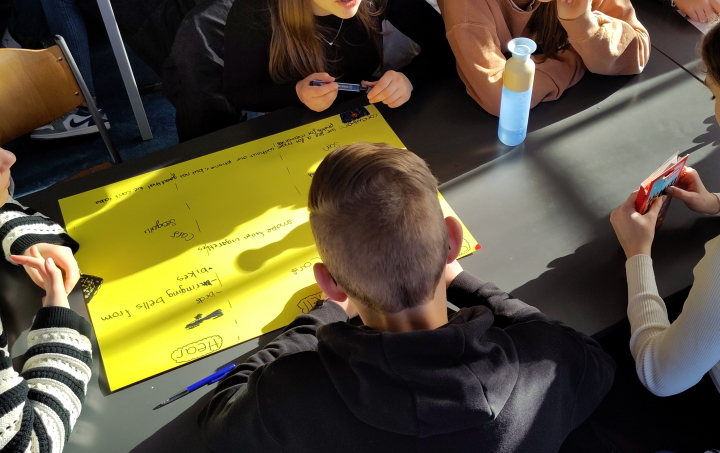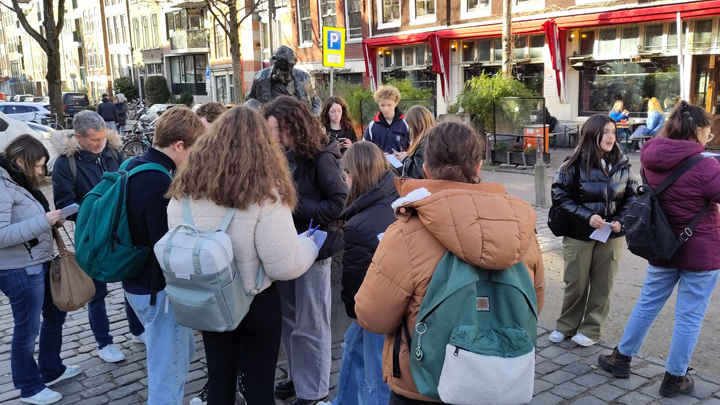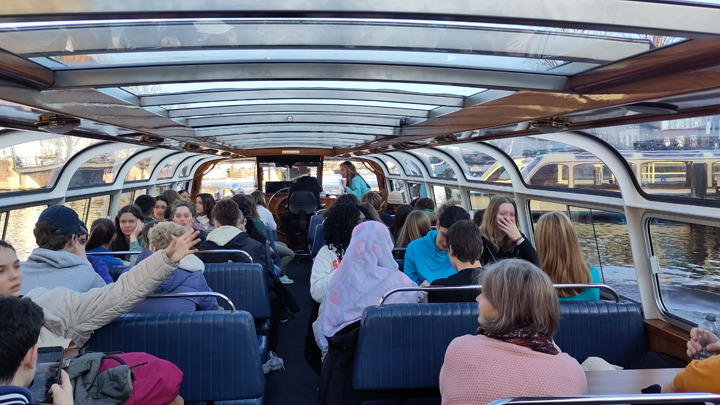In preparation for the meeting, students reflected on games they know which could be played together in a (small or large) group. As the meeting was taking place in February, one prerequisite was that the games should be suitable for indoor playing (within the school).
It was possible to make several interesting observations:
Students from several different countries chose similar games to present and introduce to the group (e.g. dodgeball and musical chairs). Also, many games did not need explanations, as they are internationally well-known.
Many games may be labelled “children’s’ games”. The teenage students, however, participated voluntarily, joining in of their own accord and had a lot of fun.
Some of the games that were played during a social get-together are explained here.
Musical chairs (Stoelendans, Reise nach Jerusalem, Chaises musicales, …)
For each player, one chair is placed into the centre of the room, in a circle, the seating facing outward. One chair is removed (in the case of large groups, also two chairs may be taken away). Music starts playing, players start walking around the circle. When the music stops, everyone tries to sit down as quickly as possible. Those players left without a chair have to leave the game. Everyone stands up again. One chair (or two or three chairs) is taken away. The music starts again… This continues, until only one chair, one sitting person is left (the winner).
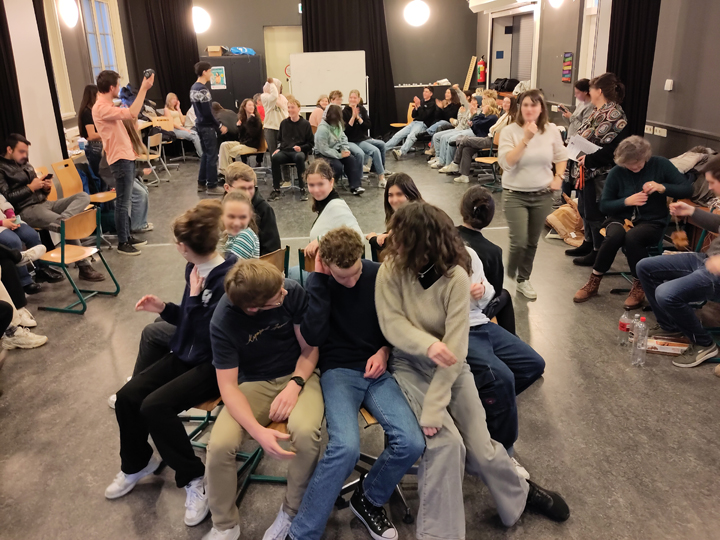
Rope jumping
Two people are holding a long rope on each end. They swing it around while those standing in the middle try to jump over it. The group tries to continue for as long as possible.
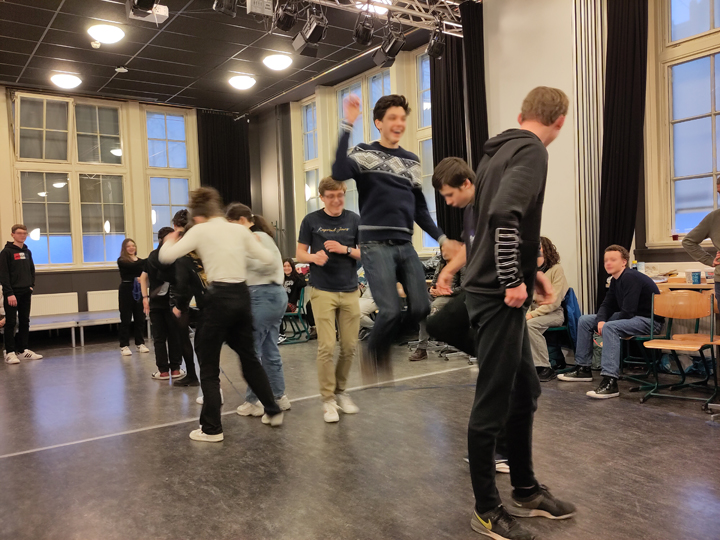
Dodge ball
Two teams are playing against each other in the gym. They are each in their “own” half of the gym and are not allowed to leave the playing area. They throw (soft) balls at each other, trying to hit someone without the opposite being able to catch the balls. If someone gets hit by a direct ball (without having first touched the floor or walls), that person is “out”. This person now is outside the playing field – and changes to the outside of the opposing team. Also from here, s/he can catch balls and throw them at the members of the opposing team. If this outside person hits someone from the opposing team (who then is “out”), the successful thrower gets to re-enter the field of his/her own team. The game is over when there are no more players on the inside field of one team. The team with remaining players on their inside field wins.
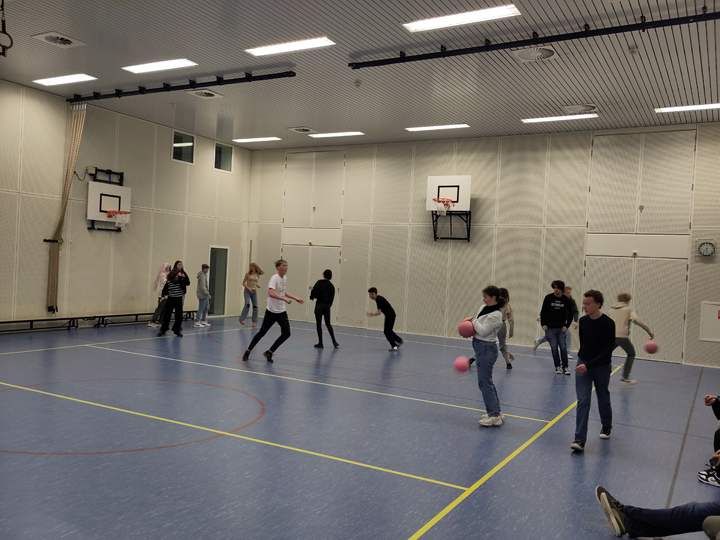
Koekhappen (Bite the cake)
Slices of cake (or other “soft” food) are hung onto a thread. Two people hold this up – about as high as the players’ mouths.
The player is blindfolded and now has to approach the line of cakes/cookies/… without using any hands. If s/he manages to bite off a piece of the cake, this is hers/his. Now it’s the next players turn.

Spijkerpoepen
A number of empty bottles are opened and placed on the floor. A string is attached around the players’ waist – at the end / the back the string is left dangling at about the height of the knees. At this end, a nail or screw is attached.
The goal of the game is to insert the nail into the bottle without the use of hands. To achieve this, players squat above the bottles, trying to insert the nail attached to their string into the bottles.
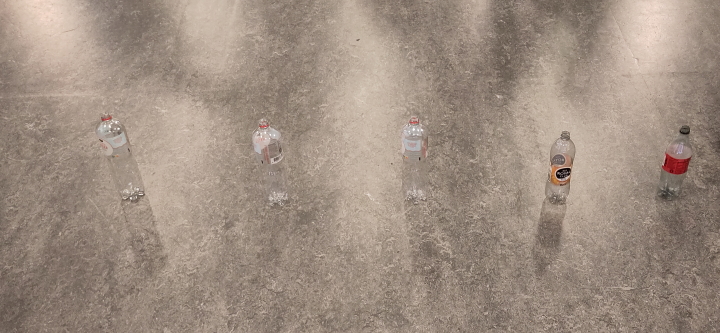
and more…
